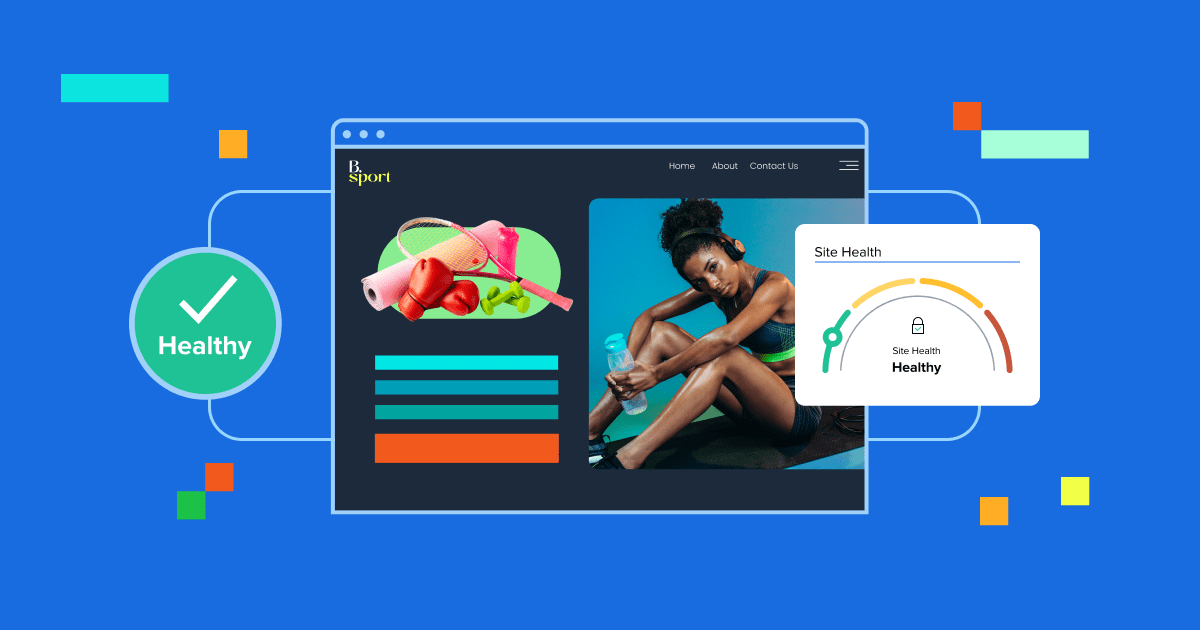Key highlights
- Learn how to write a blog post that attracts readers and drives engagement.
- Follow a how-to guide to confidently post your first blog with ease.
- Create content consistently by planning posts with an editorial calendar.
- Master how to upload a blog in WordPress and start sharing your general ideas online.
- Hit publish on your new post with clear main points and a strong call to action.
New to blogging? Writing a blog post and publishing it for the first time is a thrilling step, but it comes with its share of uncertainties and challenges. If you’re learning how to write a blog post, this guide keeps things simple.
How do you choose a blog topic, craft a captivating title and structure your blog content? What’s a good length to aim for? If you’re not sure how to post a blog or how to upload blog in WordPress, you’ll see those steps too.
How do you make your blog appear in search results? What blogging platform should you use and why?
These are all valid questions that need thorough answers. But it gets more interesting blog posts are one of the top marketing channels that yield the highest return on investment (ROI).
In this guide, we’ll explore how to write your first blog post, covering blog post ideas and the writing process and we’ll also address common challenges you might face when writing blogs for the first time.
Factors to consider when choosing a blogging platform
The blogging platform you choose will be home to your blog content for a long time. So, you need to make the right choice if you want to write a blog post and manage your own blog smoothly.
When deciding how to post a blog or publish your first article, clarify your long-term blogging goals whether it’s personal expression, business promotion or monetization and plan your custom domain name accordingly.

Once that’s done, use the checklist below to choose the blogging platform that best meets your needs and helps you create successful blog posts with ease.
- Ease of use: Opt for an intuitive interface with user-friendly features to streamline the blog writing and publishing process.
- Customization options: Ensure the platform offers themes and plugins that allow you to personalize your blog and structure your blog content easily.
- Scalability: Choose a blogging platform that allows you to grow your self-hosted WordPress blog, accommodating increased traffic and new content while maintaining clean internal links.
- Mobile responsiveness: Confirm that the platform supports mobile devices so your blog posts are accessible to everyone, regardless of device.
- Search engine optimization (SEO) friendliness: Prioritize platforms with built-in SEO tools to enhance your blog’s visibility on search engines (titles, URLs and meta descriptions).
- Community support: Evaluate the platform’s community and support forums for troubleshooting and advice from successful bloggers.
- Costs and pricing structure: Consider the platform’s pricing plans, including the cost of hosting and domain registration, to ensure you stay within budget (many include a free domain in the first year).
- Monetization options: If you plan to make money online, choose a platform that supports revenue options like Google AdSense or paid subscribers.
- Security features: Prioritize platforms with robust security to protect your written contentand user data.
- Integration with third-party tools: Ensure compatibility with tools for analytics, eCommerce and social media scheduling to make managing your blog easier.
- Content ownership: Check the platform’s content ownership and data policies to ensure full control over your own content.
- Backup and export options: Make sure the platform allows easy backup and export of your blog posts for data safety.
- Loading speed: Choose a platform that ensures fast page loads for a better user experience and more organic traffic.
If you’re looking for an affordable blogging platform that checks all these boxes, WordPress takes the crown. WordPress is trusted by 43% of all websites, making it the world’s leading platform for both new and successful bloggers.
How to write your first blog post
Publishing your first great blog post involves more than just the actual writing process. Here’s a step-by-step guide on how to write your first blog post like a pro and make it stand out on search engines.
1. Choose blog post topics
Generate a working blog topic that you’ll modify after conducting keyword research and audience analysis.

But how do you arrive at a working topic? First, consider your goals. Why do you want to write a blog post? Do you want to sell products or services, build thought leadership or create brand awareness?
Your goal must align with the interests of your target audience. This means your best blog post ideas will be at the intersection of your goals and your readers’ needs.
If you have a product, service, course or brand to promote, your topic should remain relevant to your own blog and audience.
For example, if you sell running shoes, your blog post could focus on comfort, fit or performance. To create relevant blog post topics, identify your audience’s needs and pain points.
You can use Google Search to discover new blog post ideas. For instance, typing “arch support for running” into search engines will generate helpful content suggestions for your next post.

The more familiar you are with a topic, the easier it is to start writing a good blog post about it. Choose something you know well — it helps you write naturally and share valuable information drawn from your own experience.
2. Research the topic and conduct keyword research
Before you start writing, get clear on who needs your blog content. Engage in discussions on platforms like Facebook, LinkedIn, Reddit and Quora to understand your audience and their pain points.
Find products or services related to your topic and see what users are saying about them. Platforms like Google and Amazon are great places to start.

YStudy how people describe their needs and problems. This insight will shape your writing process, tone and relevant keywords.
Use keyword research tools like Semrush to identify great blog post topics and optimize your written content. You can also create free surveys using tools like Google Forms or SurveyMonkey to collect audience feedback and interesting ideas for your next post.
3. Determine the ideal length for your first blog post
A good blog post usually ranges from 1,000 words for short guides to 2,500 words for in-depth tutorials. Aim for this range when writing your first blog post.
Strike a balance between depth and brevity. The most important thing is to thoroughly cover your chosen topic without overwhelming readers with information.
Prioritize quality content, address audience needs and maintain an engaging writing style. Tailor the length of your post to your blog niche, considering that some readers prefer short, easily digestible content.
An excellent blogging tip would be to stick with the length suggestion on SEO tools like Clearscope and Surfer. These tools recommend specific word counts to help you structure your blog posts, ensuring you cover all the relevant points without going off track.

4. Craft a compelling blog post title
Now that you know your target audience and understand their needs, it’s time to generate a keyword-rich, attention-grabbing blog post title when you write a blog post.
Alternatively called headlines, titles are important because they introduce your blog content to your audience and help them decide whether or not to read it. It is a crucial step in writing a blog post successfully.

Follow these helpful tips to create a compelling topic for your title:
- Use numbers: Numbers attract attention and suggest an organized structure, which can increase click-through rates on your blog posts.
- Include keywords: Improve search engine visibility and attract the right target audience by including relevant keywords in your blog title.
- Keep it short and sweet: Aim for a concise title your readers will understand at a glance.
- Ask a question: Pose a question that sparks curiosity or highlights a common pain point your audience may have.
- Use power words: Evoke emotions and drive conversions with power words. Examples include “ultimate,” “incredible” and “revolutionary.”
- Be unique and specific: Stand out by offering a unique angle or promising specific benefits in your blog post title.
- Test multiple versions: Experiment with different title variations. Put out a survey for potential readers to vote for the great blog post ideas.
Once you’ve written the headline, use optimization tools like CoSchedule’s Headline Studio and Sharethrough to assess your title’s effectiveness. These helpful tools can make your blog writing more data-driven and aligned with search results.
5. Create an outline of blog topic
Your brainstorming and keyword research phase should reveal what readers want to learn about your chosen blog topic. Creating an outline involves building a list of relevant blog post topic ideas.
Organize those subtopics in a logical sequence. Assign word counts to those sections based on their degrees of relevance to the main points and how much information to cover. You can use SEO tools like Frase to understand what these sections should look like.
Determine where you’ll need graphics and where to apply structured data to boost your search engine optimization efforts. Leave call to action (CTA) notes in strategic sections of your outline (e.g., the conclusion) to guide how you weave your offerings or products into the entire blog.
Creating a clear outline helps you start writing efficiently and is a vital part of the writing process when you’re learning how to write blogs.
6. Start blog writing the blog content
Craft a compelling opening paragraph that grabs readers’ attention is crucial for writing blog posts. Organize blog content logically, using subheadings to create a clear hierarchy.
Break up the content into digestible paragraphs. Use numbered lists or bullet points to enhance readability. Ensure a smooth flow between sections to maintain reader engagement. Conclude with a strong summary or call to action, which drives your audience to take the desired action and hit publish.
Aim for a conversational style with short, concise sentences, especially when writing blogs for general audiences. Be sure to explain complex concepts using easily understandable terms.
The goal is to understand your audience’s background and adjust your tone accordingly. For example, a business audience requires industry-specific terms, while an academic audience requires a formal tone.
This is one of the most important steps in how to write a great blog post, helping you create valuable information and helpful content that connects with your target audience.
7. Use graphics
High-quality visuals make your blog posts more appealing. You can either download stock images, hire a designer or create your own visuals using free tools like Canva. It is a great way to enhance your own blog and written content.
Regardless of how you source your graphics, follow the latest design trends to captivate readers and convey your message effectively. Remember to credit the right sources when using images from stock websites.
Ensure your chosen design aligns with your blog name and complements the written content. Optimize image sizes for faster page load times — this improves search results and helps you gain more organic traffic.
Finally, write descriptive alt texts. This makes your graphics accessible and also makes your content more relevant to search engines.
8. Proofread and edit your post
Done writing a blog post? Take a breather, then read your article aloud to catch errors and ensure clarity. Proofreading tools like Grammarly and Google Docs’ spell check help you maintain high readability while fixing errors.
Break down the proofreading process into sections, focusing on grammar, spelling and overall coherence.
Sometimes, your content may need to be reviewed by an expert. Hire a proofreader or editor to review your written word and help you gain fresh perspectives.
Editing and proofreading ensure crisp, error-free blog content that leaves a lasting impression on your readers and supports a successful blog.
9. Optimize for search engines
Search engine optimization (SEO) improves your blog’s visibility and ranking on search results pages.
Here’s how to write a great blog post and optimize it for search engines:
- Use relevant keywords: Place relevant keywords in the title, headings and within your blog content. Use SEO tools like Yoast or Clearscope to optimize your self-hosted WordPress blog.

- Craft compelling meta tags: Write accurate meta descriptions with your primary keywords. This tells your readers and search engines what to expect from your blog post.
- Use an SEO-friendly URL structure: Create concise URLs that contain your primary keyword and match your custom domain name.
- Optimize images: Assign descriptive file names and alt text for accessibility and keyword relevance.
- Add internal and external links: Link to other posts and other blogs for authority. Adding internal links also helps users navigate your entire blog easily.
10. Promote your post
Explore digital marketing methods beyond SEO. Share your new blog post on social media platforms to reach a global audience quickly, sometimes with just a few clicks.
If you have newsletter subscribers, notify them about your new post via email and encourage social shares. Cross-promoting with other blogs is another great way to promote your own content and grow your audience.
If you want faster results, collaborate with influencers or run ads to drive more traffic to your self-hosted WordPress blog. As you begin blogging, these tactics will help you gain visibility and grow into one of the successful bloggers online.
Beginner mistakes to avoid when writing your first blog post

Most mistakes you might make while figuring out how to write a blog post are merely violations of the processes we’ve outlined already. We’ll discuss them further to help you remember them as you write a blog post and publish your first blog post on your own blog or self-hosted WordPress blog.
1. Poor planning
Poor planning can undermine your blog post’s effectiveness. This results in incoherence, low engagement and lack of clarity. If your readers struggle to understand your blog content, it’ll be hard to earn their trust.
Before diving into content marketing or blog writing, thoroughly conduct keyword research about your blog topic and target audience. Develop a clear outline to guide your writing process. This ensures your written content is well-structured, engaging and optimized for search engines.
2. Crafting uncompelling headlines and introductions
Only you have 8.25 seconds to capture your target audience’s attention. If your headline and introduction are not compelling enough, readers may lose interest in your blog.
Craft a catchy headline that sparks curiosity, uses relevant keywords and resonates with your audience. Follow it up with an engaging opening paragraph that hooks readers, encouraging them to delve further into your blog content. This is a key skill when learning how to write blogs or writing blog posts that drive engagement.
3. Neglecting visual appeal
Ignoring visual appeal could diminish the overall readability of your blog post, making it hard for readers to connect with you and retain the information you’re sharing.
Break up lengthy text with visual elements such as images, screenshots, infographics, tables or videos. Ensure the visuals are relevant to your blog post topics and of high quality. Optimizing images also helps your search results and improves more organic traffic to your entire blog.
When you upload a blog in WordPress, add descriptive alt text and ensure each image aligns with your blog name and message. This enhances accessibility and SEO while improving your successful blog design.
4. Underestimating editing and proofreading
Errors convey a lack of professionalism, eroding your readers’ trust in your written word. So, publishing unedited content can undermine your credibility.
Diligently edit your own content to spot typos and grammatical errors while ensuring overall coherence. Take advantage of online proofreading tools or hire an expert editor to polish your blog writing.
Editing and proofreading are fundamental elements of how to write a blog post effectively, ensuring your final draft is a good blog post that engages and informs your readers.
5. Not engaging with your audience
Your audience could lose interest in your blog posts if you don’t respond to their comments section. Such apathy hinders your new blog from gaining a loyal readership.
Actively respond to comments from readers. Foster a sense of community by expressing gratitude for feedback and encouraging further discussions. Building connections with your target audience enhances your blog’s overall impact and ensures long-term success as a successful blogger.
6. Treating your first blog post as an introductory post
Don’t approach your first blog post like an “about me” section. Instead, address a problem or share valuable information that helps readers solve an issue or achieve something meaningful. Readers aren’t keen on personal details unless you’re sharing a unique story or compelling topic that adds value.
Publishing your first blog post, especially when you begin blogging, requires proper planning, structured presentation, meticulous editing, and active audience engagement.
By avoiding the common mistakes outlined above, you’ll create content helpful to boosts your visibility in search results and sets the stage for a successful blog journey.
Final thoughts
Writing a blog post is not just about stringing words together. It’s a strategic and creative process aimed at delivering value. By understanding your audience, defining a clear purpose and employing SEO techniques, you’ll learn how to write a blog post that resonates with readers without keyword stuffing.
Your journey to becoming a successful blogger starts with choosing the right blogging platform. That’s why Bluehost offers top-quality WordPress hosting that lets you build your own blog from scratch. Whether you’re learning how to post a blog or exploring how to upload a blog in WordPress, Bluehost simplifies the process with a step-by-step guide designed for beginners.
With Bluehost, you can go from learning how to write blogs to creating compelling stories, managing your blog domain and crafting each post with clarity and purpose. In just a few clicks, you can begin blogging, share ideas and start building a community around your content.
Kickstart your blogging journey with Bluehost WordPress hosting plans today and turn your thoughts into engaging blog posts that drive conversions and lasting connections.
FAQs
To write a blog post as a beginner, start by choosing a clear topic, researching it well and creating an outline. Then start writing engaging and helpful content that shares your ideas and connects with your readers.
Follow this step-by-step guide: pick a topic, research it, write a draft, use bullet points, edit your content and hit publish. This how-to guide helps you begin blogging confidently without overthinking the process.
You can use AI tools to brainstorm blog post topic ideas, create outlines or polish your writing style. Still, add your personal touch and compelling stories to make each post truly unique to you.
A blog post example could be a how-to article, listicle or story that shares valuable information with readers. Each post should include a brief summary, relevant bullet points and a clear takeaway.
A good blog writing format includes a catchy headline, introduction, body with subheadings and a conclusion or call to action. Keep it structured, conversational and free from keyword stuffing.
Tools like Grammarly, Jasper AI and Notion can help you plan individual posts organize ideas and overcome writer’s block. They make writing a blog post easier, especially when you’re just getting started blogging.
To connect with readers, write blogs that address their pain points, use a conversational tone and encourage interaction through the comments section. Focus on your main points and keep your own experience authentic and also add call to action.




Write A Comment